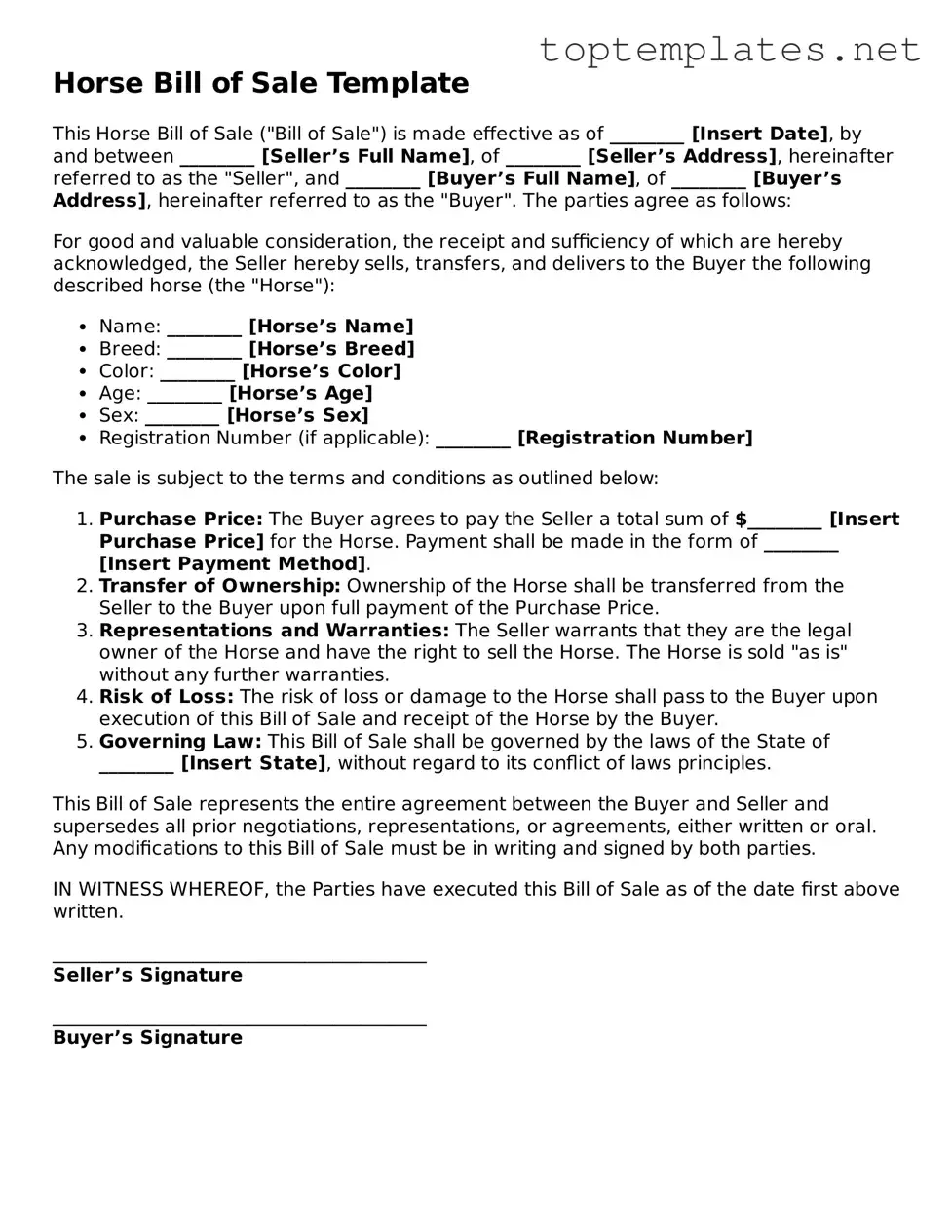What is a Horse Bill of Sale form?
A Horse Bill of Sale form is a legal document that records the sale or transfer of a horse from the seller to the buyer. It serves as evidence of the transaction, detailing the agreement between the two parties, including information on the horse, the sale price, and any other terms and conditions related to the sale.
Why is a Horse Bill of Sale necessary?
This document is necessary to legally document the ownership transfer of the horse, ensuring both buyer and seller have a clear record of the agreement. It provides proof of purchase for the buyer and releases the seller from future liabilities associated with the horse. Additionally, it can be required for registration purposes or by insurance companies.
What information should be included in a Horse Bill of Sale?
The Horse Bill of Sale should include the full names and contact information of the buyer and seller, a description of the horse (including breed, color, age, and any identifying marks or registration numbers), the purchase price, payment details, and the date of sale. It may also mention any warranties or representations made about the horse's condition, training, or health and any other terms agreed upon by both parties.
Is a witness or notarization required for a Horse Bill of Sale?
Requirements can vary by jurisdiction. While not always legally necessary, having the document witnessed or notarized can add an extra layer of authenticity and may help in resolving any future disputes. It's advisable to check local laws to determine specific requirements in your area.
Can a Horse Bill of Sale be used for all types of horses?
Yes, a Horse Bill of Sale can be used for all types of horses, regardless of their breed, age, or purpose (e.g., racing, breeding, leisure). However, depending on the horse's intended use, additional details might be included to specify any special terms related to the sale.
How can I ensure the Horse Bill of Sale is legally binding?
To ensure the Horse Bill of Sale is legally binding, make sure it includes all necessary information, is signed by both parties, and meets any specific requirements set forth by local laws. Consulting with a legal professional can help to verify that all legal criteria are met.
What happens if information is missing from the Horse Bill of Sale?
Missing information can lead to disputes over the terms of the sale and may affect the legal enforceability of the document. To avoid potential issues, it's important to review the Bill of Sale thoroughly and ensure all relevant details are accurately recorded before signing.
Can a Horse Bill of Sale be modified after it's signed?
Once signed, the Horse Bill of Sale represents a legal agreement. Any modifications must be agreed upon by both parties, documented in writing, and appended to the original document or drafted as a new agreement to maintain legal validity.
What should I do with the Horse Bill of Sale after the purchase?
Both buyer and seller should keep a copy of the Horse Bill of Sale for their records. This document can serve as proof of ownership, be useful for tax purposes, or be required in the case of legal disputes or when obtaining insurance. Safe storage of the document is recommended.
